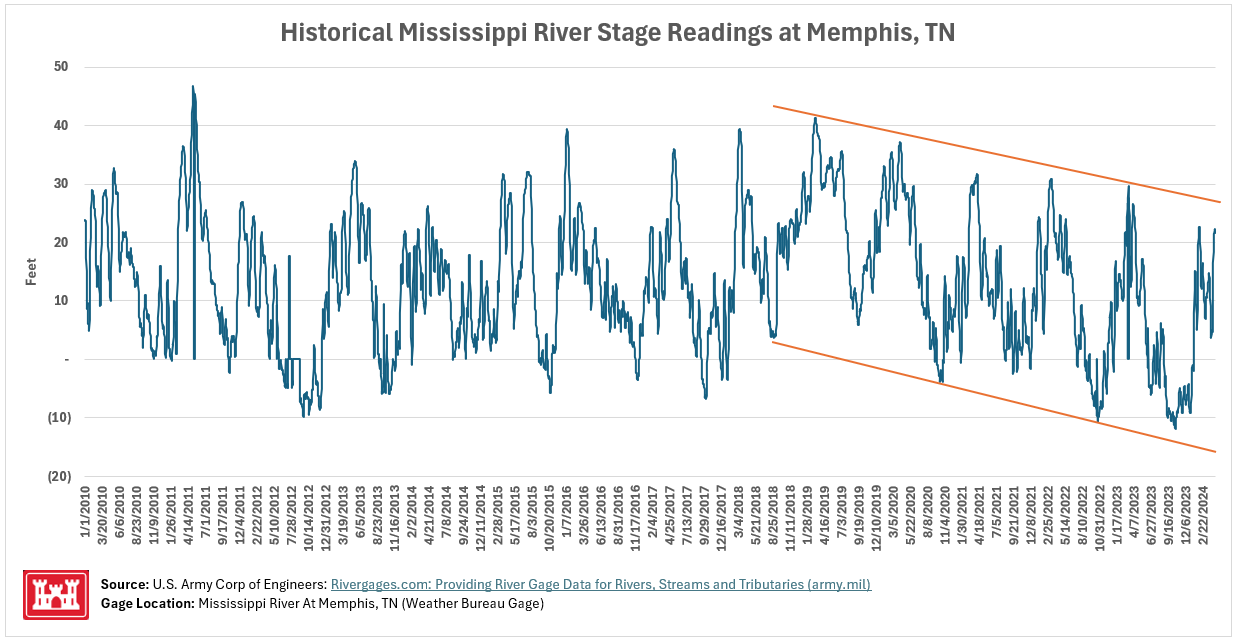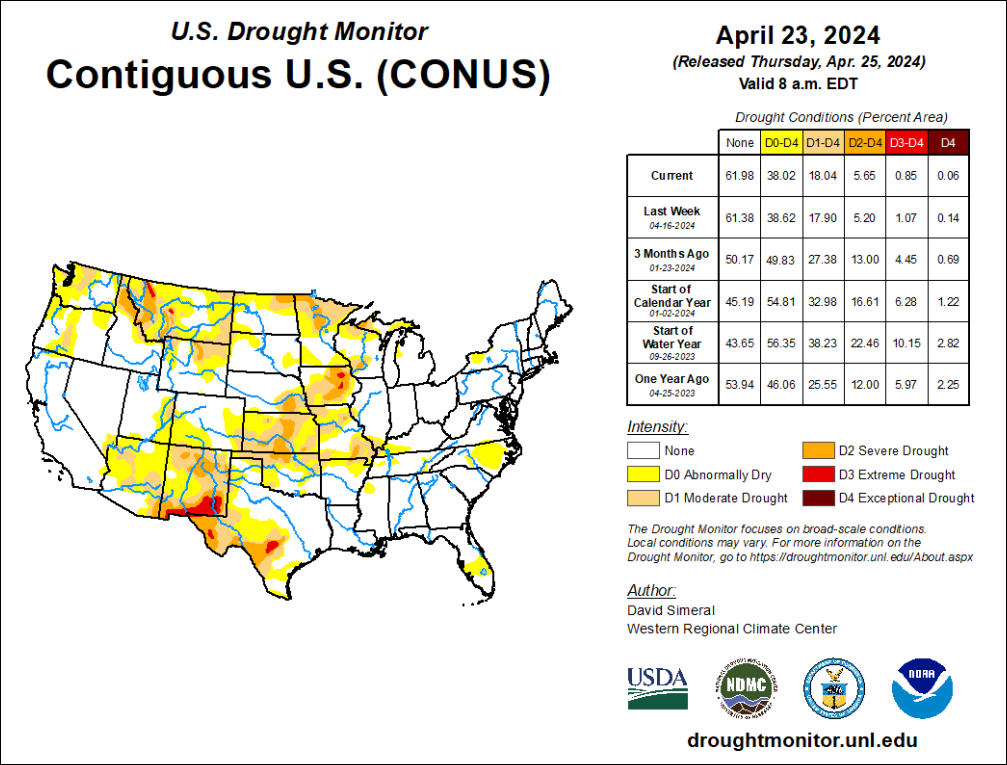Recent and Historical Mississippi River Gage Readings
Author
Published
5/1/2024
Background
The Mississippi River is one of the busiest waterways in the United States. Of its 4,267 miles of navigable channels (1/3 of U.S. inland waterways) 589 million tons of cargo move on the system each year with cost savings in transportation at $12.5 billion. Maintaining and protecting the Mississippi River and other deep draft waterways is one of the U.S. Army Corps of Engineers’ (USACE) key missions.
On February 2, 2024, the USACE, Mississippi Valley Division (MVD) announced that the drought that plagued the Mississippi River basin since 2022 was officially over. Low water conditions began in the region in September 2022. The U.S. Army Corps of Engineers experienced drought conditions throughout the Mississippi River Basin and worked with its local, state, and federal partners and stakeholders to mitigate the impacts.
The Corps operates its water basins as a system-wide approach. The 2022 drought within the Mississippi River basin lines are shared with two other major Corps divisions, the Great Lakes and Ohio River Division which encompasses 17 states. The Ohio River and the Missouri rivers are major contributors to water inflows within the Mississippi River.
During the drought conditions, MVD maintained 9-foot navigation throughout the system, working with USCG and the Navigational industry to identify problem spots on the river, and respond with necessary dredge assets. Beginning in June 2023, the Mississippi River again began to experience low-water conditions throughout the basin and coordinated with industry and partners to mitigate potential impacts.
Upper and Lower Mississippi River Gage Readings
To gain historical context related to the gage levels at various points on the Mississippi River, data were collected from the USACE website[1] for representative points on the Upper Mississippi River (Lock and Dam 11 at Dubuque, Iowa) and on the Lower Mississippi River (Memphis, Tennessee).
Upper Mississippi River (Dubuque, IA)
The daily gage level readings displayed in the chart below show:
- Very pronounced seasonality (high gage readings in spring of each year transitioning to low gage readings in fall of each year) from January 1, 2010 through April 23, 2024.
- As shown by the trendlines, there has been a visible downtrend in high and low gage readings since 2019.
- The lows experienced in fall 2022 and fall 2023 are similar to those experienced in fall 2012, also a very dry year.
- Spring 2024 gage levels have so far been the lowest of any year since at least 2010.

Lower Mississippi River (Memphis, TN)
The daily gage level readings displayed in the chart below show:
- Very pronounced seasonality (high gage readings in spring of each year transitioning to low gage readings in fall of each year) from January 1, 2010 through April 23, 2024.
- As shown by the trendlines, there has been a visible downtrend in high and low gage readings since 2019.
- The lows experienced in fall 2022 and fall 2023 are similar to those experienced in fall 2012, also a very dry year.
- With the possible exceptions of spring 2012 and spring 2014, spring 2024 gage levels have so far been the lowest of any year since at least 2010.

Current Drought Conditions
As shown in the following two figures (early September 2023 and late April 2024), recent rains in many parts of the continental United States have caused drought conditions to ease considerably, to the point that only two small areas in Iowa are experiencing D3 drought conditions.


As Iowa continues to receive recent rainfall, questions now turn to whether rains will increase (causing flooding), will continue for a “normal” year, will we receive timely rains during a severe drought (like 2023) or will we experience conditions similar to 2012, the last widespread, damaging drought experienced in Iowa and other major row crop producing states in the Midwest.
Additional Resources
For additional background on this topic, please see the following articles:
- October 25, 2022: Low Mississippi River Levels Creating Unusual Basis Situation (iowafarmbureau.com)
- May 15, 2023: Mississippi River Flooding Update (iowafarmbureau.com)
Want more news on this topic? Farm Bureau members may subscribe for a free email news service, featuring the farm and rural topics that interest them most!